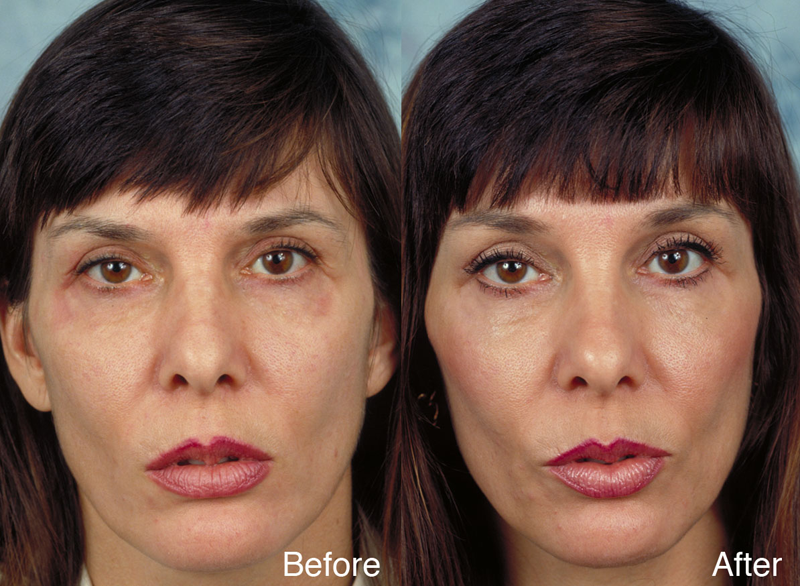Fixing Eyelid Case Studies Beverly Hills
Fixing Eyelid Surgery Procedure
Procedure: Reconstructive Midface Surgery

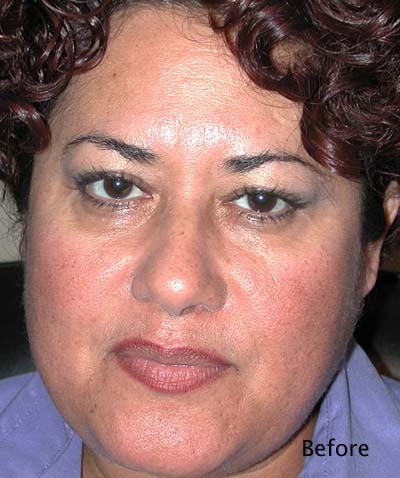
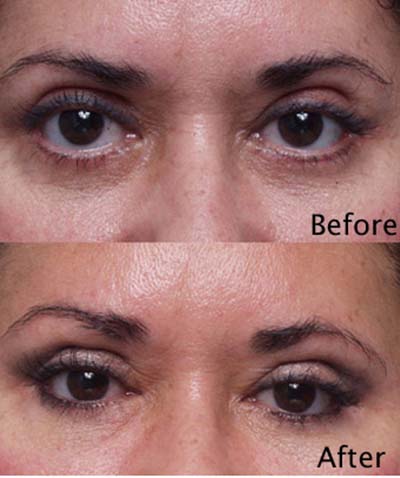
Cosmetic Concern:
This 51-year-old woman presented to her cosmetic surgeon for upper face rejuvenation. She was considering a forehead lift but was persuaded to have eyelid surgery. She was extremely disappointed, as her surgeon skeletonized the upper eyelids, leaving them asymmetrical appearing and surgical. Her lower eyelids were not much better. The surgery pulled her lower eyelids down and emphasized the dark circles under the eyes.
Diagnosis
After these unsatisfactory results, she consulted with Dr. Steinsapir to learn what could be done to help improve her appearance. She was told that several surgeries might be needed to achieve her goals.
Treatment:
Dr. Steinsapir first recommended and performed a midface lift with hand carved e-PTFE orbital rim implants to address the dark circles and lower eyelid position. Following this surgery, he performed fat transfer to the face to further soften the upper eyelids and the face. Dr. Steinsapir was able to correct her unsatisfactory surgery, so that she could achieve the look she originally desired.
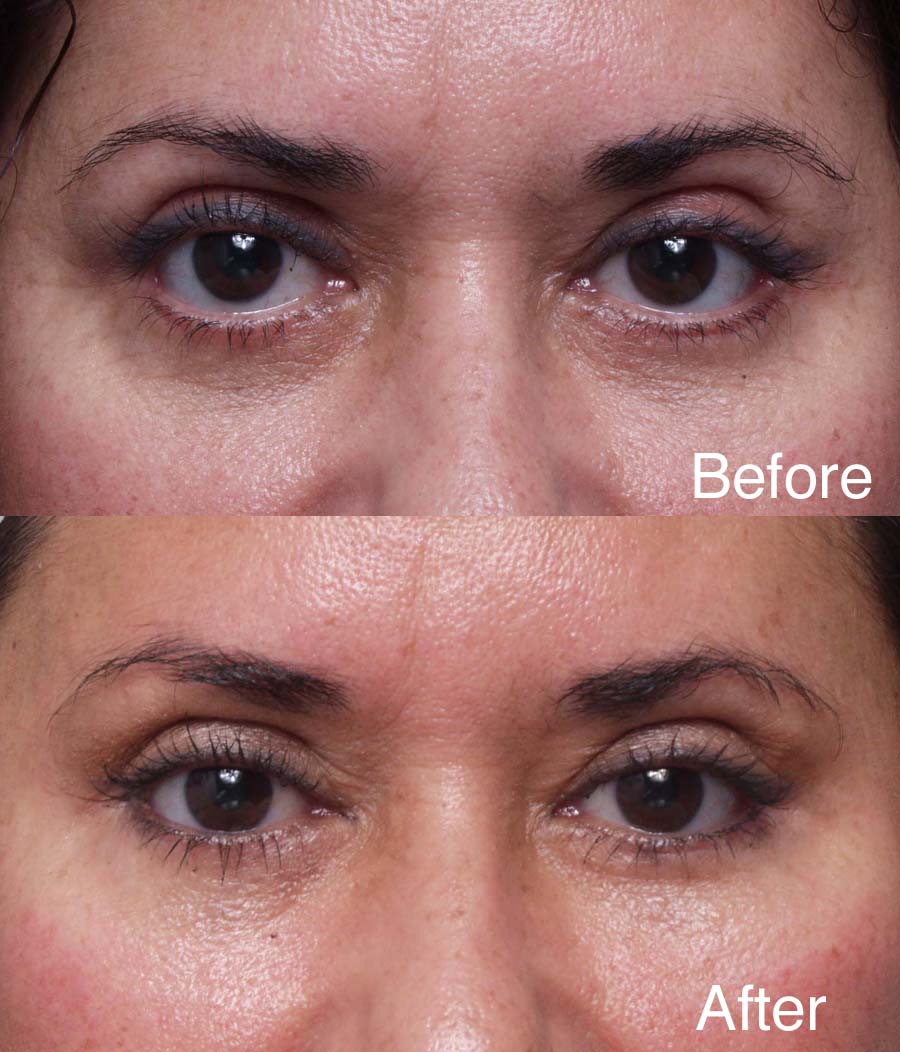
Procedure: Repair of Prior Eyelid Surgery
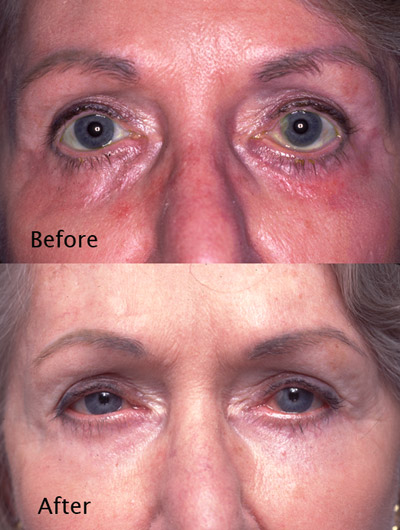
Cosmetic Concern:
64-year-old woman with a history of prior eyelids surgery. In addition to her cosmetic concerns related to the pulled down lower eyelids. The muscle of the lower eyelids was damaged by her surgery and she has chronic dry eye symptoms.
Diagnosis
The lower eyelids had aggressive surgery that damaged both their appearance and function
Treatment:
The patient’s lower eyelids were reconstructed using graft material obtained from the roof of her mouth. This material was place behind the lower eyelid and avoided the necessity of a skin graft to the outside of the eyelid, which are difficult to conceal. To facilitate her repair, the cheek was also modestly lifted onto an ePTFE implant at the orbital rim. Due to the complexity of this repair, the right and left sides were repaired at separate surgeries that were 1 week apart.
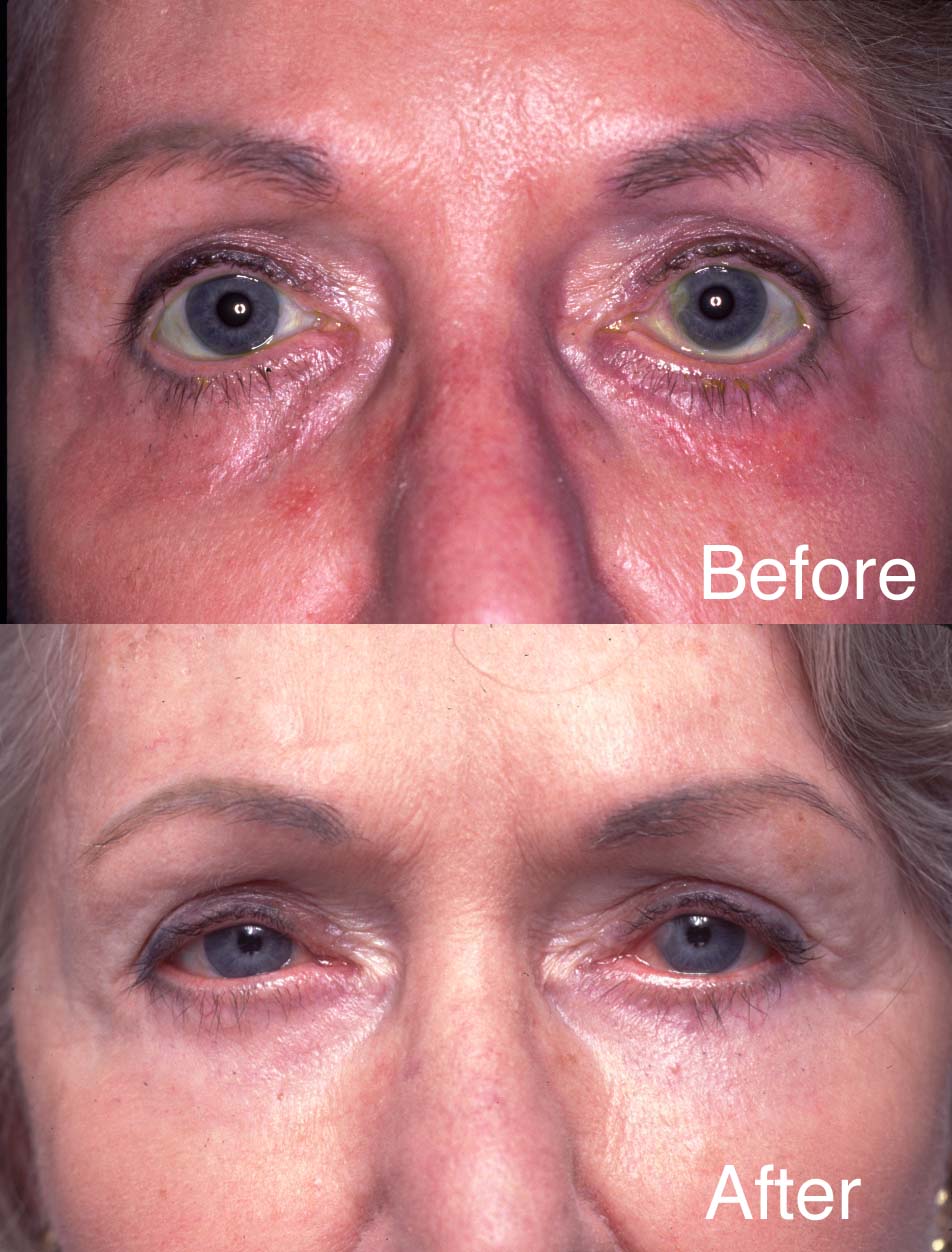
Procedure: Restorative Surgery
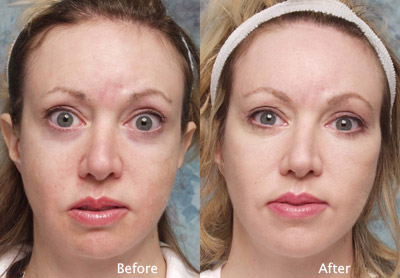
Cosmetic Concern:
34-year-old woman with a history of craniofacial surgery for maxillary hypoplasia. To address remaining aesthetic concerns she also had eyelid surgery and several face lifts. However, she feels that she still lacks the needed projection in her cheek-bones that would be best for her face.
Diagnosis
- Glabellar scar secondary to flap perforation during forehead surgery.
- Bilateral upper eyelid retraction.
- Maxillary hypoplasia with deficient inferior orbital rim. Projection.
- Marked facial asymmetry.
Treatment:
- Augmentation of the orbital rims with custom hand carved orbital rim implant made from ePTFE
- Vertical midface lift
- Bilateral lateral canthoplasty
Discussion:
The patient needed additional volume in the midface. The ePTFE rim implant is custom carved for her particular anatomic deficit.
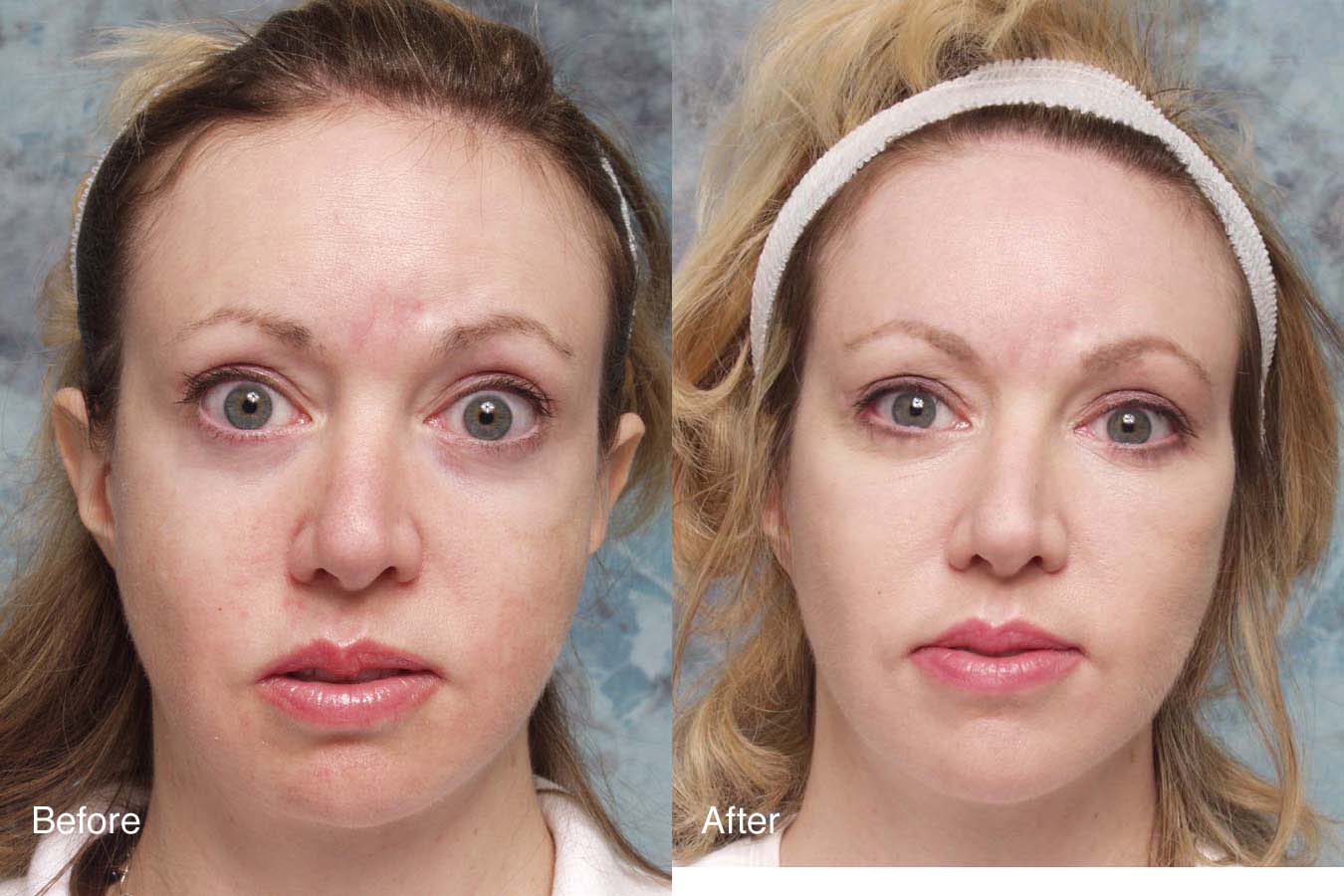
Procedure: Fixing Eyelid Surgery
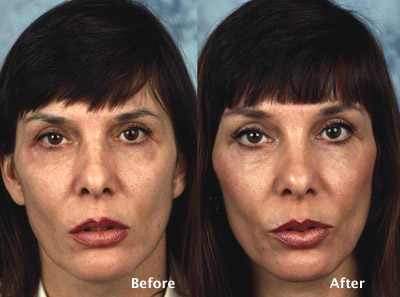
Cosmetic Concern:
43-year-old woman concerned about the fall in her eyebrow following eyelid surgery. She also had laser resurfacing at the time of her upper eyelid surgery and developed hyperpigmentation.
Diagnosis:
- Brow ptosis following eyelid surgery.
- Post laser resurfacing hyperpigmentation.
Treatment:
- Endoscopic forehead lift
- Lower eyelid chemical peel
Discussion:
The position of the eyebrow is determined by the balance of the forehead lifting muscles and the muscles in the eyelid that pull the eyebrow down. In turn, gravity and forehead laxity have a bearing on the activity of these muscles. In particular, when the brow tissue encroaches on the upper eyelid, the motor tone of the forehead lifting muscles increase. Removing skin from the upper eyelid fold decreases the need for the forehead lifting muscles to work resulting in a relaxation in the eyebrow position. Therefore, it is not surprising that her eyebrows relaxed after upper eyelid surgery.
Hyperpigmentation is a known complication of laser resurfacing. Often this resolves spontaneously with time. When it does not go away on its own, the pigment needs to be mobilized and this can best be done with an appropriate chemical peel. It this case, the peel was able to lift out the extra pigmentation.
